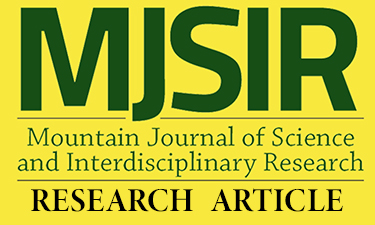Value Chain Analysis of Pig (Sus scrota) in a Highland, Indigenous Community: The Case of Sablan, Benguet, Philippines
Main Article Content
Abstract
Swine production is a booming industry in the Philippines, albeit majority are into backyard raising. Experts recommended the enhancement of the marketing aspect to parallel the development in production, thus, the need for baseline studies like value chain analysis. Few value chain studies have been conducted on lowland communities but none in highland indigenous communities. This study analyzed the value chain of swine production in Sablan, Benguet using Micheal Porter’s generic value chain model and field observations. Results showed that the value chain of swine in Sablan consists of small scale holders. The important chain actors are the pig producers, traders, meat vendors, meat processors and consumers. The traders had the highest value added per unit while the pig raisers were the least efficient. The value chain in the area is distinct from other value chain studies in the country in lacking lechon actors. Sablan has potential to supply the market demand of pork in its neighbouring city and municipalities. With proper management and wider market outlet, it can result to a better profit efficiency and economic growth in the future. Moreover, the key actors should be given more opportunity and knowledge on their own operation to maximize the potential and opportunity of the pig market.
Article Details
References
Bureau of Agricultural Statistics (BAS). (2013). Swine Industry Performance Report. January-June 2013 [Data file]. Retrieved from http://agstat.psa.gov.ph/?ids=downloads_view&id=729.
Descallar, R.N.C. (2008). Swine Production and Management Strategies in Pag asa Piggery at New Katipunan Sto. Tomas, Davao del Sur. Retrieved on December 3,2018 from http://infohouse.qrc.org/ref/67/19872.pdf.
Livestock Research Division-DOST-PCAARRD. (2016). Philippine pork to the world. Retrieved from http://www.pcaarrd.dost.gov.ph/home/portal/index.php/quick-information-dispatch/2681-philippine-pork-to-the-world
N.A., & Baticados, G.N. (2014). Value Chain Analysis of Philippine Native Swine (Sus scrofa philippinensis) Processed as Lechon in Major Production Areas in the Philippines. Journal of Global Business and Trade, 10(1): 77-91.
Merin, M.R. (2001). Value Chain Analysis of Pork in Laguna. (Unpublished Thesis) University of the Philippines- Los Baños, Laguna.
Philippine Statistics Authority (PSA). (2016). Philippine Agriculture in Figures. Retrieved September 22, 2018, from CountrySTAT Philippines: http:// countrystat .psa.gov. ph/ ? cont =3
Piadozo, M.E. (2001). Syllabus on agricultural marketing. Los Baños, Philippines: University of the Philippines Los Baños, College of Economics and Management, Department of Agricultural Economics Pp 12-13.
Porter, M.E. (1985). Competitive advantage: Creating and sustaining superior performance. New York, NY: Free Press Pp 45-47.
Recklies, D. (2001). Value Chain notes. Retrieved on December 16, 2018 from http://www.fao.org
Rola-Rubzen, M.F, Gabunada, F., & Mesorado, R. (2002). Marketing Systems for Small Livestock in the Philippines: The Case of Western Leyte. A Paper presented during the 46th Annual Conference of the Australian Agricultural and Resource Economics Society

